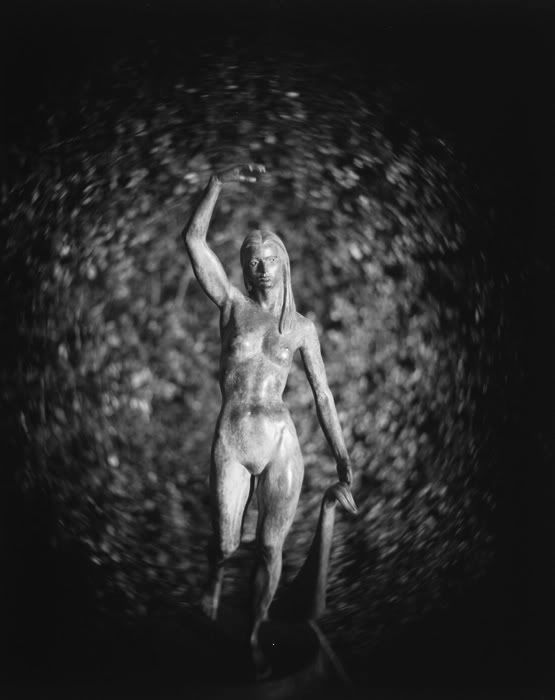What would the coverage of a Petzval lens be? The only work I have suggests 40 degrees. Do they usually vignette after that?
I hope that this lens will cover most of the width of a 4x5 sheet, leaving a circular image.
The swirlies seem to affect fine detail in out of focus planes, I like that effect.
The lens is a ex-lantern lens. No name of course. No idea of the focal length. Abt 5" perhaps. I think the plates were about 4" square the lantern would have handled.
The lens was screwed into a thin ring of threaded brass, which was then apparently soldered to a spun brass peice.
After having cleaned up the optics I am hoping I can get a local engineering form to re-cut a pattern Pacemaker Graflex panel with a hole of the thread diameter using the existing hole as a pilot. Hopefully they could cut the spun bit off the old mount so I can use the threaded part as a retaining ring without recourse to S.K. Grimes for help.



 Reply With Quote
Reply With Quote




Bookmarks